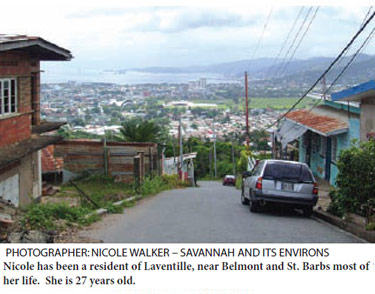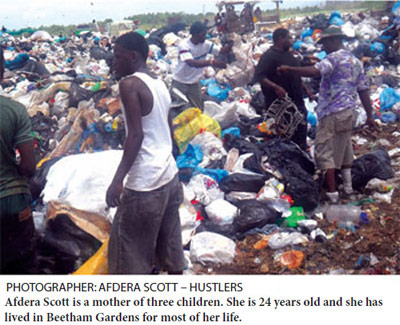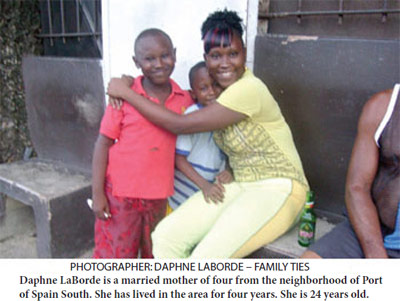 |
 |
 |
|
August 2011
|
Tell It Like It IsPhotovoice project gives women a forum
The project, coordinated by Dr Kishi Animashaun Ducre, a Fulbright Scholar, tried to accomplish two goals – the academic one of trying to understand the lives of women forced to endure environmental burdens, and a social one of empowering its participants by amplifying their voices and priorities through the exhibition. Dr. Ducre’s project included women from Beetham Gardens, St. Barbs, Laventille, Never Dirty and Mon Repos amongst other areas of Port of Spain. Participants were encouraged to focus on transmitting images of their lifestyles, visually representing how they adapt and create homes amidst adverse circumstances. They were given cameras to capture the elements in their communities which they perceived as representing the community’s strengths and areas in need of improvement.
Dr. Ducre says she was driven to embark on this project by her passion for environmental justice, which involves studying unequal patterns in the distribution of environmental burdens like landfills, dumps, power plants, chemical complexes and any type of land use that people fight to keep out of their communities. East Port of Spain was a good case study. The project reshaped her thinking, she said. She had to confront her narrow view of the environment, as it encompassed more than the presence of unwanted facilities, but also served to be broadly defined as urban decay, crumbling (or nonexistent) infrastructure, violence as a result of gang and drug activities, graffiti, etc. Dr. Ducre describes the hosting of the exhibition by NALIS as a tremendous boost; it was well attended and the response from the public was astonishing. She felt it had done something to raise public consciousness. “You should have seen the faces of the participants when they entered the space for the exhibition for the first time… It was one thing to look at the 4x7 print of a picture and then another to see images enlarged and mounted in a gallery space. I think that the participants were in awe of the presentation and then, during the opening, the level of engagement of the general audience to the photographs… It was an amazing experience,” she said. She hopes to be able to repeat the exhibition at different locations.
|

 A thousand words come to mind when one sees the photographs of the East Port of Spain Photovoice Project. On display were images, captured by 12 women, depicting various elements of their communities, including poverty and gang violence nestling between scenes of natural beauty.
A thousand words come to mind when one sees the photographs of the East Port of Spain Photovoice Project. On display were images, captured by 12 women, depicting various elements of their communities, including poverty and gang violence nestling between scenes of natural beauty.  The Photovoice project was hosted by the Institute of Gender and Development Studies (IGDS) at The UWI in collaboration with the East Port of Spain Development Company and featured an exhibition which ran at NALIS from July 18 to August 5, 2011.
The Photovoice project was hosted by the Institute of Gender and Development Studies (IGDS) at The UWI in collaboration with the East Port of Spain Development Company and featured an exhibition which ran at NALIS from July 18 to August 5, 2011.
